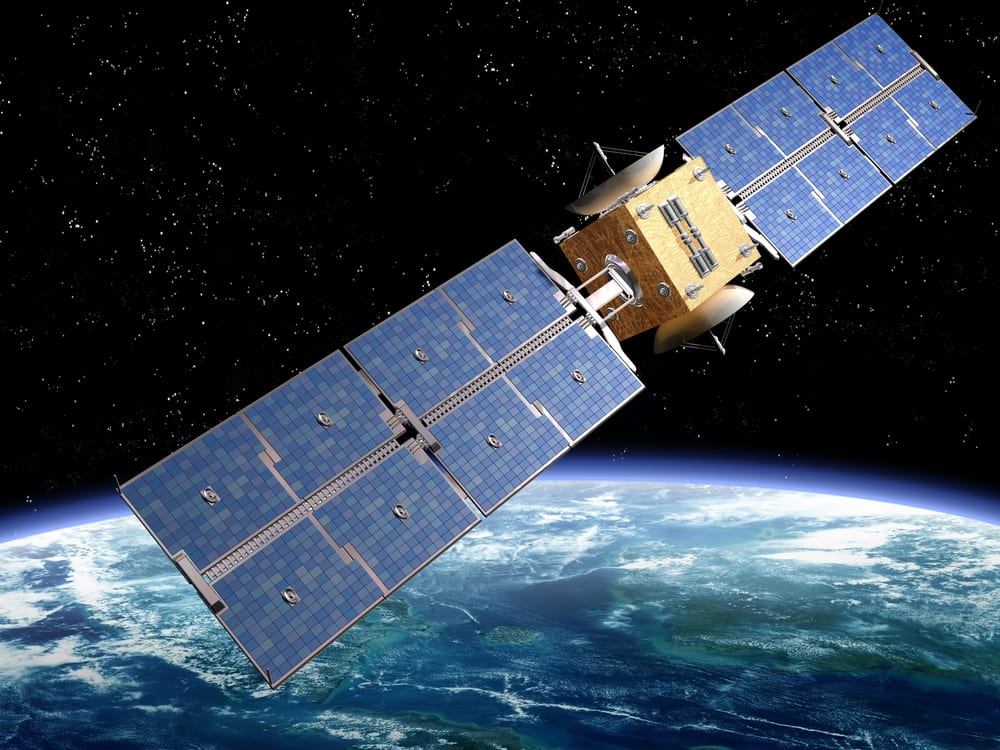
Additive Manufacturing For Space Industry Applications – From Earth To Orbit And Beyond: An Opportunity Analysis And Ten-year Forecast
$1,248.50 – $1,748.50
| Select User License | Single User License (one computer), Group User License (Up To Five Computers), Enterprise User License (Unlimited Computers Within Your Organization) |
|---|
Request Excerpt
Chapter One: Adoption of AM for Commercial and Non-Commercial Space Applications
1.1 Space, the Next Frontier for 3D Printing
1.1.1 The Market for Space
1.1.2 Established Benefits of AM a Key Step to Implementing AM into Space Applications
1.1.3 More Low-cost Commercial and Education Satellites
1.1.4 Less Regulations than in the Civil Aviation Industry
1.2 Forecasting in this Report
1.2.1 Methodology
1.3 The Additive Manufacturing Market for Space
1.4 Potential of the Space AM Parts Market
1.4.1 AM Material Factors
1.5 Geographic Considerations Shaping Space AM Applications
1.6 Limiting Factors
1.7 Key Points from this Chapter
Chapter Two: Present and Future Market Opportunities for AM Space Applications
2.1 AM in the Satellite Industry
2.1.1 CubeSats
2.1.2 Additive Manufacturing of Satellite Components
2.1.3 Relevant Case Studies for AM Satellite Components
2.2 The Launch Vehicle and Rocket Industry
2.2.1 Additive Manufacturing of Rocket Components
2.2.2 Relevant Case Studies for Additive Manufacturing of Rocket Components
2.3 Additive Manufacturing of Spacecraft Parts
2.4 Forecast for Space AM Parts Manufacturing
2.5 Space-Based AM
2.5.1 3D Printing on the International Space Station
2.5.2 New Space Architectures
2.5.3 3D Printing in Zero-G
2.5.4 Gathering Space Resources
2.5.5 Replacement Components in Space
2.5.6 Deployable Structures
2.5.6.1 Archinaut
2.6 3D Printing for Space Exploration
2.6.1 On-Demand Replacement Parts
2.6.2 Food 3D Printing in Space
2.6.3 Bioprinting in Space
2.6.4 3D Printing Space and Planetary Habitats
2.7 Key Points from This Chapter
Chapter Three: AM Hardware and Materials for Space Applications
3.1 Evolution of AM Processes for the Space Industry
3.1.1 Polymer and Composite Powder Bed Fusion
3.1.2 Polymer and Composite Material Extrusion
3.1.3 Metal Powder Bed Fusion
3.1.3.1 The Laser Metal PBF Market
3.1.3.2 Electron Beam Metal PBF
3.1.4 Metal Binder Jetting
3.1.5 Directed Energy Deposition
3.2 3D Printing Electronics for Space
3.3 Ten-Year Hardware Forecast
3.3.1 Metal Hardware Forecast
3.3.2 Polymer and Composite Hardware Forecast
3.4 Material Factors
3.4.1 About 3D-Printed Ceramics
3.5 Ten-Year Forecast of Materials Used for AM Space Applications
3.5.1 Ten-Year Metal AM Materials Forecast
3.5.2 Ten-Year Polymer and Composite Forecast
3.6 Key Points from this Chapter
Chapter Four: How AM Service Bureaus and AM Software Impact the Space Industry
4.1 Role of AM Specialist Service Bureau
4.2 Ten-Year Forecast of Space Part Production by AM Service Bureaus
4.2.1 Metal AM Service Bureau Parts for Space
4.2.2 Polymer AM Service Bureau Parts for Space
4.3 AM Software for Space Applications
4.3.1 Major Software Providers Influencing AM
4.3.2 Implementing Generative Design Tools for AM in Space Applications
4.3.3 Evolution of Topology Optimization and Trabecular/Lattice Structures for AM
4.4 Ten-Year Forecast for AM Software in Space Applications
4.5 Key Points from this Chapter
About SmarTech Publishing
About the Analyst
Acronyms and Abbreviations Used In this Report
List of Exhibits
Exhibit 1-1: Global Investments in Space Industry Manufacturing in 2015 ($USB)
Exhibit 1-2: A Timeline for Adoption of AM in the Space Industry
Exhibit 1-3: Overall Market for AM in Space Applications 2016 – 2027
Exhibit 1-4: AM Revenue Segment for Space Applications 2016
Exhibit 1-5: Forecast of Growth Trends for AM Revenues by Segment 2016 – 2027 ($USM)
Exhibit 1-6: Forecasted Ratio of Value of Additively Manufactured Space Parts Vs Value of Overall Space Parts Manufacturing 2016 – 2027
Exhibit 1-7: Value of Forecasted Additively Manufactured Parts for Space 2016 – 2027 ($USM)
Exhibit 1-8: Forecasted Growth Rate for Additively Manufactured Space Parts Revenues 2016 — 2027
Exhibit 1-9: Total AM Materials Sales for Space Applications by Material Type 2016 – 2027 ($USM)
Exhibit 1-10: Total AM Materials Sales for Space Applications by Material Type 2016
Exhibit 1-11: Forecast of Revenues for Additive Manufacturing Within the Space Industry, by Nation 2016 – 2017 ($USM) Exhibit 1-12: Revenues from AM in the Space Industry by Geographic Macro Area 2016 – 2027 ($USM)
Exhibit 1-13: Growth in AM Revenues in the Space Industry by Geographic Location 2016 – 2027
Exhibit 2-1: Satellite Components
Exhibit 2-2: Rocket Components
Exhibit 2-3: Estimated Value of Additively Manufactured Parts for Space $USM, Includes Tools and Parts (2016)
Exhibit 2-4: Forecasted Growth for Additively Manufactured Parts by Part Category 2016 – 2027 ($USM)
Exhibit 3-1: Leading AM Technologies Used in Space Part Production
Exhibit 3-2: Opportunities for Polymer Powder Bed Fusion in Space Manufacturing
Exhibit 3-3: Opportunities for Thermoplastic Extrusion in Space Manufacturing Exhibit 3-4: Forecast of AM Hardware Sales for Use in the Space Industry 2016- 2027 ($USM)
Exhibit 3-5: Metal AM Hardware Units Sold for Space Applications 2016 – 2027 Exhibit 3-6: Metal AM Hardware Sales for Space Applications 2016 – 2027 ($USM)
Exhibit 3-7: Polymer AM Hardware Units Sold for Space Applications 2016 – 2027
Exhibit 3-8: Polymer AM Hardware Sales for Space Application 2016 – 2027, $USM
Exhibit 3-9: Composite AM Hardware Units Sold for Space Applications 2016 – 2027
Exhibit 3-10: Composite AM Hardware Sales Revenues in the Space Industry 2016 – 2027 ($USM)
Exhibit 3-11: Total Materials Sales Revenues in AM for the Space Industry 2016- 2027 ($USM)
Exhibit 3-12: Metal AM Materials Shipments for Space Applications 2016-2027 (Kg)
Exhibit 3-13: Metal AM Materials Sales for Space Applications 2016 – 2027 ($USM)
Exhibit 3-14: Extrusion Plastics Shipments for Space Applications 2016-2027 (Kg)
Exhibit 3-15: Extrusion Plastics Sales for Space Applications 2016-2027 ($USM) Exhibit 3-16: Photopolymer Shipments for Space Applications 2016-2027 (Kg) Exhibit 3-17: Photopolymer Sales for Space Applications 2016-2027 (Kg)
Exhibit 3-18: Thermoplastic Powder Shipments for Space Applications 2016-2027 (Kg)
Exhibit 3-19: Thermoplastic Powder Sales for Space Applications 2016-2027 ($USM)
Exhibit 4-1: Ratio of AM Service Produced Parts Sales for Space Applications Vs Internally Produced Parts Value (%)
Exhibit 4-2: Total AM Service Bureau Unit Part Production for Space Applications 2016 – 2027
Exhibit 4-3: Total AM Service Bureau Revenues for Space Applications 2016 – 2027 ($USM)
Exhibit 4-4: Metal AM Service Bureau Unit Production for Space Applications 2016 – 2027
Exhibit 4-5: Metal AM Service Bureau Sales Revenues for Space Applications 2016 – 2027 ($USM)
Exhibit 4-6: Polymer AM Services Unit Part Production for Space Applications 2016 – 2027
Exhibit 4-7: Polymer AM Services Revenues for Space Applications 2016 – 2027 ($USM)
Exhibit 4-8: AM Software Sales for Space AM Applications 2016 – 2027 ($USM)
This report quantifies the projected value of additive manufactured parts and identifies the most commercially important technologies, materials and applications for 3D printing of space borne parts. It includes ten-year forecasts of the materials, hardware, software and AM service, both in terms of demand and revenues. Granular geographic nation-specific and part type-specific information completes this first ever accurate analysis of AM in the booming industry for manufacturing of satellites, launch vehicles and spacecraft. The Space AM also provides information on which companies and institutions in the space infrastructure industry are using additive manufacturing today, with relevant case studies. The report was compiled after extensive research and interviewing of key industry executives.
Key firms in the space AM segment include: 3D Systems, Aerojet Rocketdyne, Airbus, Arcam, ATOS, Bigelow Aerospace, Boeing, Concept Laser, CRP Group, ExOne, Hexce, Lockheed Martin, Made in Space, Materialise, Nano Dimension, Optomec, Orbital ATK, Oxford Performance Materials (OPM), Safran, Sciaky, SLM Solutions, Space Systems Loral (SSL), Space X, Thales Alenia Space and Trumpf.
The report includes an in-depth analysis of the material used for space AM applications, which takes into consideration both high performance polymers and metals as well as composites, ceramics and technologies for direct 3D printing of electronics.

